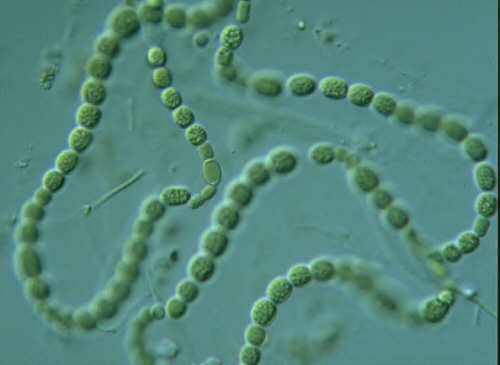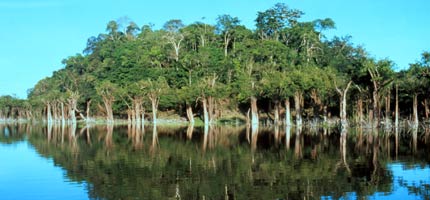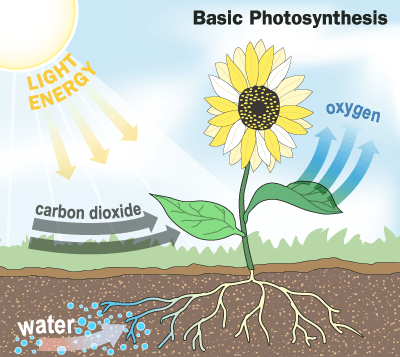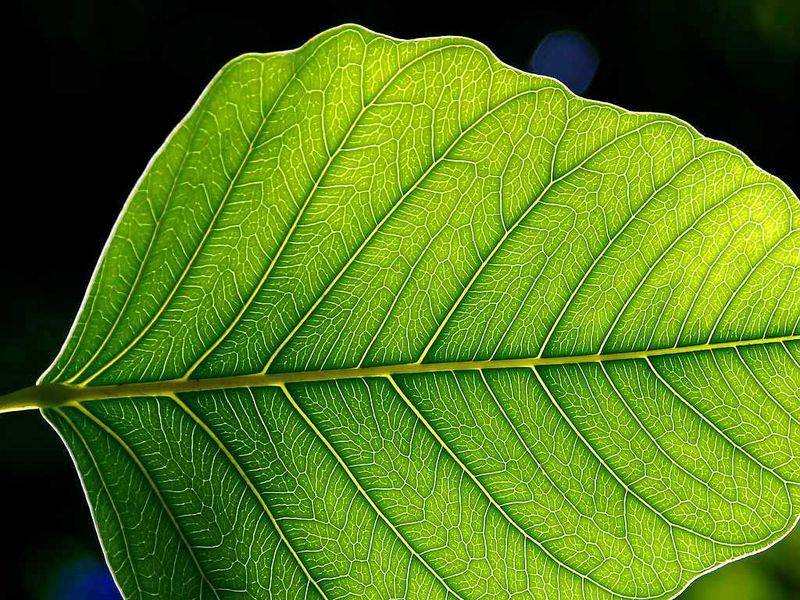| Photosynthesis (from Greek "phos" light, and "synthesis" to put together) is the chemical process of converting sunlight into usable chemical energy. Most of the oxygen in the air today is the result of photosynthesis. Without photosynthesis, complex oxygen-using life forms would never have had the chance to develop. Organisms that use photosynthesis to produce energy are called photoautotrophs. Photoautotrophs are organisms that can synthesize all the food they need using sunlight, water, and carbon dioxide. The word comes from the Greek "phos," meaning light, and "auto," meaning self. Today's photoautotrophs include plants, algae, and cyanobacteria (blue-green algae). Cyanobacteria were responsible for making most of the oxygen in Earth's early atmosphere. Today, plants play a primary role in the carbon cycle. Each year, plants absorb between one-third and one-fourth of carbon emissions in the atmosphere. Without photosynthesis, climate changes and global warming would progress much faster and have far more serious consequences. |
 Cyanobacteria Cyanobacteria |

Each year, the Amazon Rainforest pulls 1.5 billion tons of carbon dioxide from the atmosphere. |
 |

The leaf is the primary organ of photosynthesis in plants. The leaf has many different types of plant tissue that all play an important role in photosynthesis. |
Photosynthesis is a very complex process involving many different reactions and locations. Although photosynthesis is executed differently by different organisms, this website will focus on the basic process of photosynthesis that occurrs in plants. In plants, photosynthesis is performed in organelles called chloroplasts, which we'll cover in more detail later on. The reactions are categorized into two processes: the light-dependent reactions, where the plant literally uses sunlight to "split" water and can only work in the daytime, and the light-independent reactions, which can continue regardless of available sunlight. Although there are many sub-processes and chemical reactions in photosynthesis, the whole process can be summed up with the following equation:
6 CO2 + 6 H2O = C6H12O2 + 6 O2
|
 Cyanobacteria
Cyanobacteria

